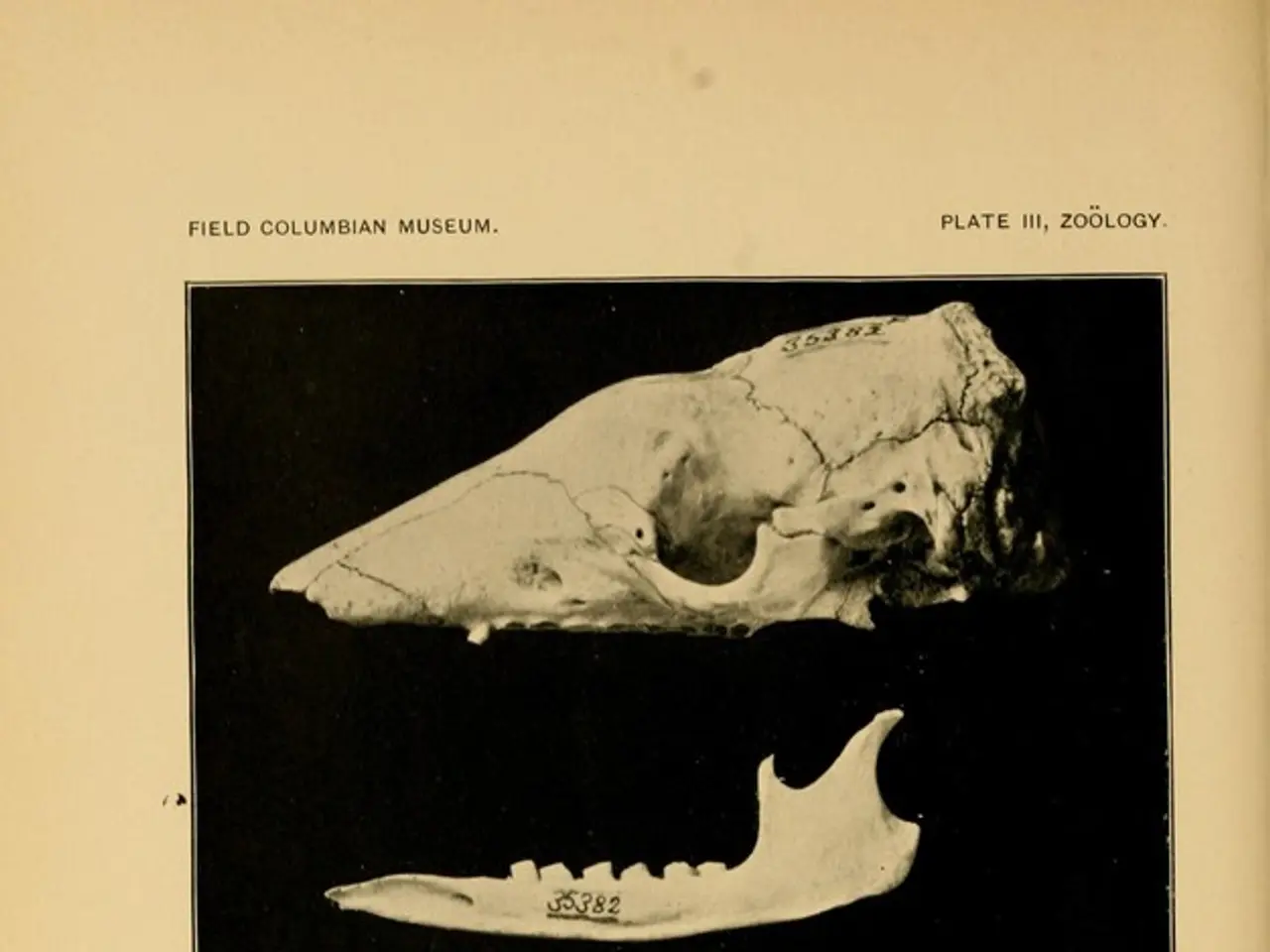Osteoarthritis Severity: Identifying Stages, Recognizing Symptoms, and Adjusting Lifestyle
In the advanced stage of osteoarthritis (OA), known as severe OA, the cartilage protecting joints has significantly worn away, leading to a host of complications. These may include deformity from swollen joints, difficulty sleeping due to pain, difficulty exercising, joint instability leading to falls, tingling or numbness in the arms or legs due to nerve compression, depression, anxiety, or other mental health conditions due to reduced quality of life, and bladder and bowel dysfunction in severe cases of spinal OA.
The management of severe OA involves a multi-modal approach, starting with lifestyle and conservative therapies, progressing to targeted medical treatments, and ultimately advancing to surgical options if necessary to restore function and reduce pain.
Lifestyle changes recommended include: - Weight loss to reduce joint stress, particularly in weight-bearing joints like knees and hips. - Regular low-impact exercise such as swimming, walking, or cycling to build muscle strength around the joints, maintain flexibility, and improve balance. - Joint protection techniques like using canes, cushioned insoles, or avoiding repetitive joint strain. - Heat and cold therapy for localized pain and swelling relief. - Keeping a symptom journal to track pain triggers and effectiveness of management approaches.
Medical treatments encompass: - Over-the-counter pain relievers such as acetaminophen or NSAIDs for mild to moderate pain. - Topical NSAIDs for localized pain with fewer systemic effects. - Short-term corticosteroid joint injections during severe flare-ups, though these are limited by potential cartilage damage and are not a long-term solution. - Physical and occupational therapy to design individualized exercise regimens and teach joint protection during daily activities.
Advanced pain management and surgical options include: - Radiofrequency denervation to disrupt pain signals by targeting affected nerves, providing relief for months. - Peripheral nerve stimulation (PNS), whereby a device implanted near nerves delivers electrical pulses to reduce pain. - Pain pumps delivering medication into spinal fluid for severe cases when oral meds fail. - Surgical interventions mainly when other treatments fail, such as: - Joint replacement surgery (especially knee or hip replacements) to remove damaged joints and restore function. - Joint fusion to stabilize severely damaged joints. - Arthroscopy (minimally invasive joint cleaning) and cartilage restoration procedures mainly for younger, active patients under 55 years.
Recovery from surgery typically involves physical therapy to regain mobility and function.
If someone finds it difficult to manage severe OA or treatments appear to be ineffective, they can talk with a doctor, who may refer them to a physical therapist, occupational therapist, or orthopedic surgeon to discuss surgical options. Although severe joint damage is not reversible, treatments may help slow disease progression, decrease pain, and improve joint function.
Treatments and lifestyle changes may help slow the progression of OA and prevent it from worsening. In the severe stage of OA, people may experience increased pain, reduced range of motion, joint deformity, and swelling. OA progresses through four stages: early, mild, moderate, and severe. For most people, OA will not steadily worsen over time, but the condition can affect everyone differently.
[1] Arthritis Foundation. (2021). Osteoarthritis: Symptoms and diagnosis. Retrieved from https://www.arthritis.org/diseases/osteoarthritis/symptoms-and-diagnosis
[2] Arthritis Foundation. (2021). Osteoarthritis: Treatment options. Retrieved from https://www.arthritis.org/diseases/osteoarthritis/treatment-options
[3] Mayo Clinic. (2021). Osteoarthritis: Treatment and drugs. Retrieved from https://www.mayoclinic.org/diseases-conditions/osteoarthritis/diagnosis-treatment/drc-20351577
[4] Centers for Disease Control and Prevention. (2021). Arthritis: Manage your pain. Retrieved from https://www.cdc.gov/arthritis/about/manage-your-pain.htm
[5] Johns Hopkins Medicine. (2021). Osteoarthritis. Retrieved from https://www.hopkinsmedicine.org/health/conditions-and-diseases/osteoarthritis
- Osteoarthritis (OA) progresses through four stages: early, mild, moderate, and severe, each with increasing pain, reduced range of motion, joint deformity, and swelling.
- In severe OA, the cartilage protecting joints has significantly worn away, leading to numerous complications, including difficulty sleeping due to pain, joint instability, nerve compression causing tingling or numbness, depression, anxiety, and other mental health conditions.
- Severe OA is manageable through a multi-modal approach, starting with lifestyle changes like weight loss, regular exercise, joint protection techniques, heat and cold therapy, and keeping a symptom journal.
- Over-the-counter pain relievers such as acetaminophen or NSAIDs, topical NSAIDs, and short-term corticosteroid joint injections are some medical treatments for mild to moderate pain in OA.
- Physical and occupational therapy may be recommended to design individualized exercise regimens and teach joint protection during daily activities.
- Radiofrequency denervation, peripheral nerve stimulation, pain pumps, joint replacement surgery, joint fusion, arthroscopy, and cartilage restoration procedures are advanced pain management and surgical options for OA.
- Recovery from OA surgery typically involves physical therapy to regain mobility and function.
- If someone is struggling to manage severe OA or treatments seem ineffective, they should talk to their doctor, who may suggest discussing surgical options with a physical therapist, occupational therapist, or orthopedic surgeon.
- Other joint pain, chronic diseases such as chronic kidney disease, COPD, type-2 diabetes, cancer, and autoimmune disorders like rheumatoid arthritis and psoriasis may have similar symptoms and treatments.
- Chronic-kidney-disease, COPD, type-2-diabetes, cancer, respiratory-conditions, and digestive-health issues are examples of chronic diseases apart from osteoarthritis that may require lifestyle changes, medications, and therapies.
- Eye-health, hearing, and skin-care should also be considered when discussing overall health and wellness, especially as we age and manage chronic diseases.
- Proper nutrition, fitness and exercise, and weight-management play a crucial role in managing and preventing chronic diseases like OA, diabetes, and heart disease.
- Women's-health concerns, such as menopause and breast cancer, as well as men's-health issues, such as prostate cancer, are essential considerations when addressing health and wellness.
- Mental-health conditions, such as depression and anxiety, are common among people with chronic diseases like OA, necessitating support from physicians, therapists, and mental health professionals.
- Health-and-wellness resources like the Arthritis Foundation, Mayo Clinic, Centers for Disease Control and Prevention, and Johns Hopkins Medicine provide valuable information on the diagnosis, treatment, and management of various chronic diseases, including OA.
- Medicare coverage for therapies and treatments, including joint replacement surgery, varies based on specific conditions, so it's essential to consult with healthcare providers and insurance providers to understand coverage details.




